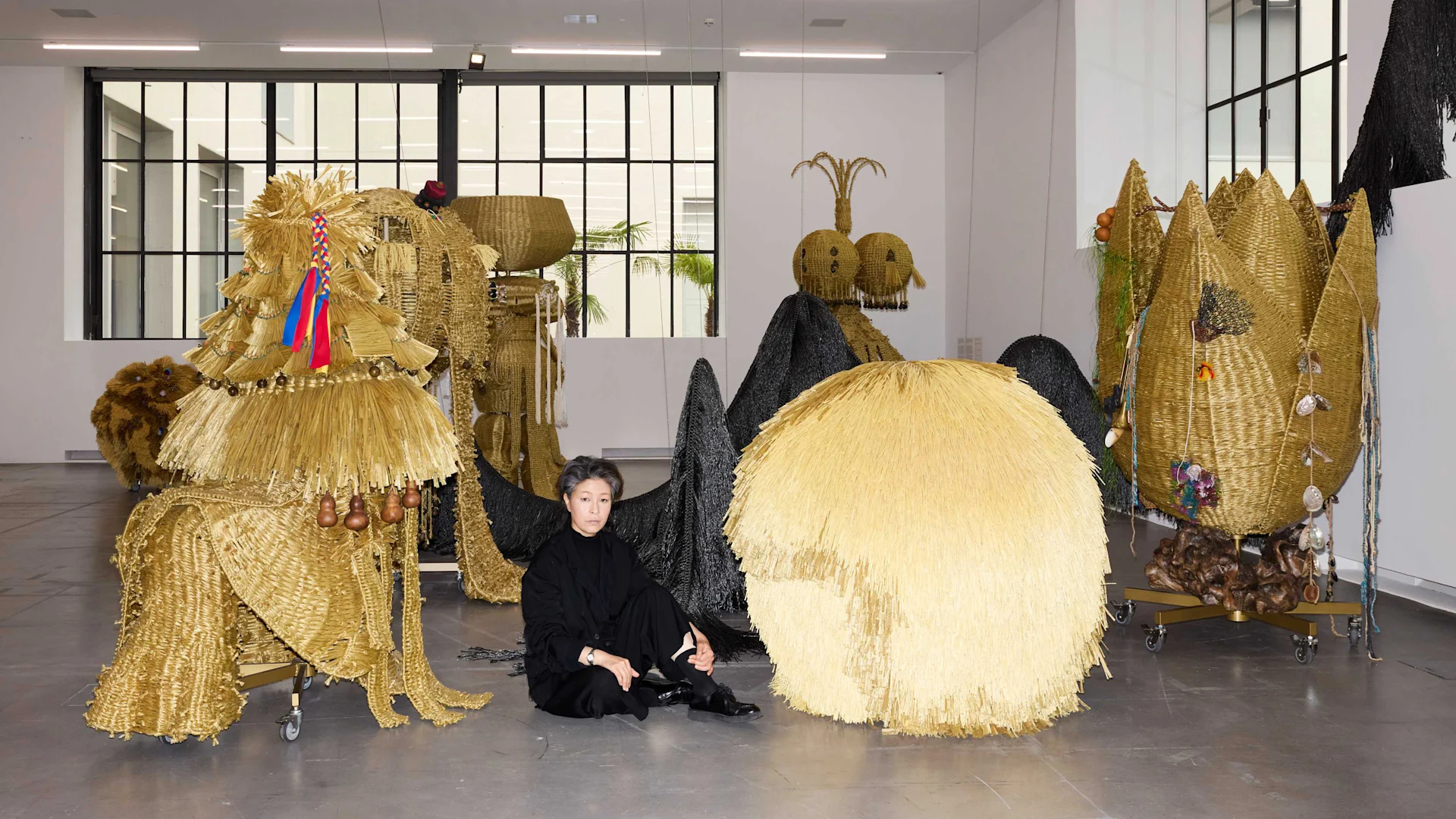
Migros Museum
World-famous artist
Korean installation artist Haegue Yang is coming to the Migros Museum in Zurich with a solo exhibition.
navigation

Culture Percentage
They have been dancing in unison for nearly 30 years: Saburo Teshigawara and Rihoko Sato. But how did the Japanese duo become global icons? We met them before their performance at the Dance Festival Steps.
Music, light and movement. These are Saburo Teshigawara's creative tools. The protagonists of his works are often he himself and his long-term dance partner, Rihoko Sato. The Japanese dance couple has been captivating audiences from Milan to New York for 29 years. She, now 51 years old, is a dancer from the tips of her fingers right down to her flexible toes. He, more than 70 years old, is a choreographer, dancer and conductor – from the first to the final scene.
Sato: “My entire dance vocabulary is based on what Saburo has taught me and what I have found out about myself. In a way, I trust him more than I trust myself.”
Teshigawara: “I can dance any dance with anyone. It will be a different dance, depending on the partner. With her, I can create something special. She is special.”
The man with the black beanie is a thinker. His words are philosophical; they reach into another sphere, just like the steps of his dance pieces. We realise this after just a few minutes, in a conversation at Theater Basel that will only last exactly 32 minutes. This is because their schedules are packed, usually deep into the evening.
We sit almost reverently opposite them, two fine figures: dark clothing, upright posture. Teshigawara’s descriptions take us back to a free-spirited, creative Japan in the early 1990s. “It was a time of peace, the spirit was very open and new art forms were welcome.” It was the time when he "found" Sato, as he says.
Teshigawara: “She is a very fragile person. This is a beautiful thing because she can feel even the gentlest, most fleeting touches deep inside her. If you wear a thick coat, you won’t feel anything.”
Sato: “When I work with him, I always discover something new and can be surprised. That makes me want to keep going – or rather, to keep moving forward.”
Sato studied gymnastics in England and the USA before attending one of Teshigawara’s dance workshops in Tokyo in 1996. These were made for her and those like her: they were open to all, so most of the 150 participants were young and inexperienced, just like her. Teshigawara explains that he doesn’t think in terms of names, prizes or careers. “I want to create something with the human body.” His own career began with this very idea back in the 1980s.
Becoming a dancer had never been his intention, he says. And yet he finds himself in the world of dance, developing his own style, far removed from familiar genres. Soon, he was also working as a choreographer, costume and stage designer, filmmaker and composer. On stage, he experiments with light, walks over broken glass, or creates scenery from countless books. And he performs on stage himself – even today, at over 70 years old.
Teshigawara: “The simple answer: nature has made me this way. The complex one: I want to be natural in everything I do. But that is not possible, so I have to take an artificial approach with a lot of training.”
Sato: “The most valuable thing I have learned is patience. When I was young, I was very irritable. Over time, I accepted that you have to put work into things and learn to control yourself.”
Sato: “I don't want to achieve anything. I want to receive.”
Teshigawara: “I want to draw more. Before rehearsals, after performances, on walks, I draw everything that comes to my mind.”
The two are not thinking about quitting. Sometimes they perform together, sometimes separately. Sometimes he writes the choreography for her solo piece, sometimes she helps him develop the choreography for his pieces. They will soon be returning to Switzerland to perform “Tristan and Isolde” on several stages (see box). How do they get on in their works? “We argue,” says Teshigawara and laughs. Sato chuckles, her hand covering her lips. A question arises.
Teshigawara: “We share our daily routine, our time, we go on stage together – yes, in a way, we're a couple. But we're not lovers.”
Sato: “We have the same goals, but we are very contradictory. Sometimes we want the same thing, sometimes the opposite.”
We have been committed to society and culture for more than 80 years . Explore our wide range of activities and be inspired.